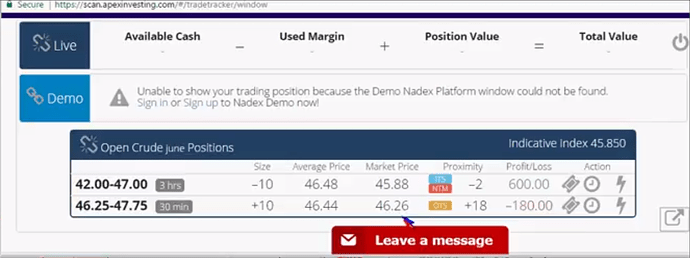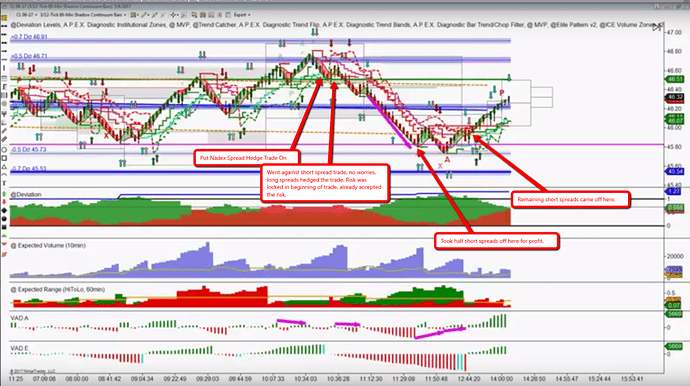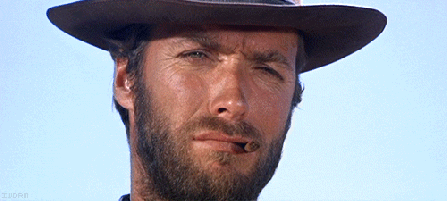By Darrell Martin
(Editor’s note: This article is similar to How to Put Insurance On A Crude Oil Trade. However, this article goes into more detail.)
Most people would agree that trading is risky and for that reason can cause any trader’s heart to race regardless of skill or experience. Successful traders learn the most important thing is to live to come back another day for trading. To do that, mastering risk management is essential to maintain trade capital. Emotions are tested with questions such as, where the stop should be placed, when and where should it be moved, and when should profits be taken.
Actually, a strategy can eliminate that struggle. It’s hedging a Nadex spread trade with a Nadex spread. Traders know that there are many different market conditions. There can be trending markets, flat markets, high volatility or times when the implied volatility is low. Good traders know like any athlete, that it is important to have a play in your trading playbook ready for whatever action the market will make.
Earlier in the week, an opportunity presented itself when volatility was low in Crude Oil. The market had slowed down. After an upward move, chart indicators and price showed the market was primed for a move downward. The primary trade was made selling the Nadex spread covering 42.00 - 47.00 for 46.48. Selling 10 contracts at that price would be a total risk of $520.
47.00 (ceiling) - 46.48 (sell price) = .52 (risk).
Nadex’s lowest increment tick value is valued at $1.
Therefore, $52 risk x 10 contracts = $520 total risk.
What if the market didn’t go down? To manage risk effectively, a hedge was added. This is where another contract is obtained in the opposite direction as the first. To hedge the primary trade’s contract, the Nadex spread covering 46.25 - 47.75 was bought for 46.44. It may seem like it would just add more to the total risk of the trade, but in fact the opposite is true.
The real risk is the difference between the prices of the bought spread and the sold spread. The bought spread price for 46.44, less the sold spread price of 46.48 is a difference of .04. Nadex’s smallest increment tick is valued at $1 a tick. The risk is now $4. Placing this trade with 10 contracts on both sides is now more reasonable at a total risk of $40 = 10 contracts x $4. Risking only $40 allows for trading those two contracts together, to construct the hedge strategy, and trade 10 contracts, which is equal to a full-sized futures oil contract that is $10 a tick.
Option traders may recognize this as a “Married Call”, buying or selling an option in the opposite direction to protect the option being traded. Putting on a hedge is like having insurance.
On this trade, the hedge contract (buy) will expire in one and a half hours, while the primary trade has over four hours remaining. If the market hasn’t gone down within that hour and a half, the trade would be exited. The maximum risk is still only $40. The market could go all the way to the ceiling 47.75 of the bought trade, around a $1200 move, and the most that would be lost is $40. It is basically unheard of to trade Oil futures with a $40 risk, without any concern of being stopped out. However, if the market moves long against the primary trade, with this strategy there is still an opportunity to profit. The max risk is taken care of and then profit would kick in.
This may resemble a strangle, but since the primary direction was short, the long side of the strategy becomes the hedge. Because of the hedge, the trade can be profitable whether the market goes up or down. The only way it can lose is if the market stays flat, in between the entries of each spread. In this case, that would be between 46.44, the long entry, and 46.48, the short entry. The max risk is locked in when entering the trade. The only requirement is movement in the market. A move down in this case has potentially more profit than a move up.
How did this trade turn out? There was a profit possibility of more than $4000 on the short side with only a $40 risk. With every tick up or down, the trader’s heartbeat could remain steady, no rising, and no sweating it out. The odds are definitely in favor of the trader. In this example, $40 was risked and the trade made over $500.
As soon as the trade was made, the place was pinpointed where to put the first take profit. Looking back at previous price action, the point where break out traders would go short and where those traders who were painfully losing would bail out selling their long positions was spotted. This point just happened to be at the low of the day.
When oil hit 45.83, half of the position was exited, closing out five contracts. Then, price was trailed for the other five contracts, until oil hit the trailing stop, in this case the MVP indicator. Once hit, the remaining contracts collected a few hundred dollars more.
Even though all short contracts were in profit, the bought spreads were kept on. At that time the spread market price was 46.26 and the floor was 46.25 it could only lose $1 or $10 with 10 contracts. The market could have continued to go up. In this trade, they expired. Once profit is made and the insurance of a hedge spread already paid for, if there is nothing to lose, keep it on. In this example, the bought spreads could have profited if the market went far enough in its direction.
How can traders not afford to trade spreads? This trade only risked four dollars per contract with the possibility to profit either direction the market moved! Learn to hedge! The drawback is that the market has to move. If it doesn’t move, the total amount risked is lost.
In summary, know that this type of trade is not hard.
-
Pick a direction.
-
Choose a spread in that direction with a close proximity, i.e., a daily, near the money Nadex spread.
-
Now look for a spread in the opposite direction of the one just entered, with the closest price to it, the lowest risk, and some time left in it. Giving it time for the trade to play out.
-
The amount put up to enter the trade is merely the margin. The risk is the difference between the two entries.
This strategy requires zero stop loss. Even when wrong, money can still be made, unless the market doesn’t move. It’s low risk, low stress and high profit potential. Traders may actually be bored with this kind of trade. Full relaxation is possible while controlling $1700 worth of oil with only a $40 risk. That’s the way to trade! Be comfortable trading. Try this strategy out in demo. Understand it and then move on to doing it live.
For free day trading education, strategies and access to the spread scanner visit www.apexinvesting.com.




